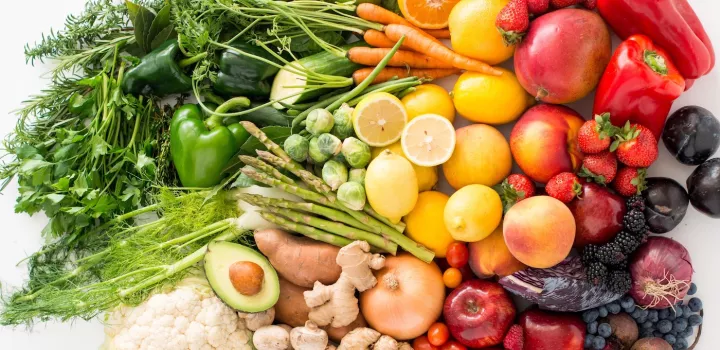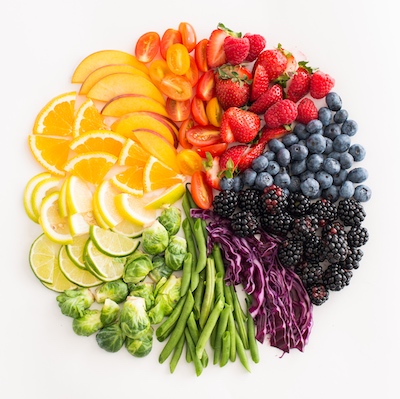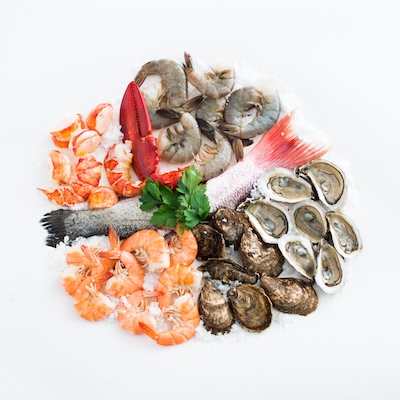
Demystifying Dietary Guidelines with ICE's Director of Nutrition
What’s Good to Eat?
Chef Celine Beitchman is preparing five meal plans for the five major food groups to get the most out of carbohydrates, lipids and proteins. Here, she introduces the series of nutritional recommendations and why we need it.
Our quality of life depends on the foods we choose to eat. Those choices influence our immediate health and our health as we age. But, for the majority of us, what to eat is a minefield. It’s not that our questions don’t have well-researched answers, but, the human body is complex and eating means consuming thousands of substances daily. This makes a one-size-fits-all plan an ongoing challenge.
Our desire for clarity on this topic has spawned a $1 billion wellness industry that continues to grow. This domain is so successful in part because we don’t often appreciate the emotional connection we have to foods; and how easily we are fooled by slick brand claims and endorsements.
When it comes to recommendations, most experts agree that plant foods should make up the basis of your meals but not exclusively so. Good quality animal foods – including dairy, meat, fish and eggs – have their benefits, too.
In the Health-Supportive Culinary Arts, we start with a broad view of dietary choices using Dr. Annemarie Colbin, PhD’s “Criteria for Healthy Food Selection”. In general, we opt for foods that are whole, fresh, seasonal, real and minimally processed. The point is you shouldn’t have to be told that a food is food. It should be obvious.
 No one food contains all of the necessary substances to sustain life, so its best to eat a wide variety. And, not just a range of food groups (think: vegetable, fruits, nuts, grains, beans), but a range within those groups (think: leafy greens and carrots, walnuts and almonds, lentils and chickpeas).
No one food contains all of the necessary substances to sustain life, so its best to eat a wide variety. And, not just a range of food groups (think: vegetable, fruits, nuts, grains, beans), but a range within those groups (think: leafy greens and carrots, walnuts and almonds, lentils and chickpeas).
In their whole forms, these foods provide the body with varying amounts of bioactive substances: macronutrients (carbohydrates, proteins and lipids), micronutrients (vitamins and minerals), and water. Some nutrients are essential, which in nutritional terms means our body can’t make them and they must be consumed. These include essential lipids, like omega 3s, and all of the vitamins and minerals.
When we eat foods, as opposed to supplements for example, we get combinations of macro- and micro-nutrients and meet our needs across many days.
Do you really need all the macronutrients?
Diet models that restrict or hold up one macronutrient or food group are outlying concepts that often fail to meet their promises.
Carbohydrates are found in all plants and in dairy products as the sugar or lactose. Despite the keto-craze (a low carb, high fat dietary trend), carbohydrates are the main source of energy in the human diet. In addition to energy, carbohydrates provide some of the best sources of fiber, water, vitamins and minerals. Carbohydrates also contain phytochemicals, plant compounds like curcumin from turmeric, beta-carotene from carrots or lycopene from tomatoes, for example, which may confer added benefits to our health. Examples include fruits, vegetables, nuts, seeds, beans and grains.
Lipids, commonly known as fats, can be found in both animal and plant foods and provide some energy to the body under varying conditions. Lipids feed into a number of biological pathways, helping us produce hormones, insulate neurons, and cushion organs and bones. Without fat we can’t easily metabolize certain vitamins or mineralize our bones. Lipids can be found in dairy and animal products, including nuts, seeds, beans, grains, vegetables, and as pure oil.
 Proteins, in animal and plant foods, are composed of smaller units called amino acids. When we eat protein we are consuming hundreds and thousands of amino acids. Our bodies take those bits and reform them in ways that provide structure to the body, like bones and organs, and put them into DNA pathways that help us reproduce cells and functional proteins, like antibodies. Proteins are in every living thing – plant or animal, which makes getting enough a pretty easy thing.
Proteins, in animal and plant foods, are composed of smaller units called amino acids. When we eat protein we are consuming hundreds and thousands of amino acids. Our bodies take those bits and reform them in ways that provide structure to the body, like bones and organs, and put them into DNA pathways that help us reproduce cells and functional proteins, like antibodies. Proteins are in every living thing – plant or animal, which makes getting enough a pretty easy thing.
When we consume whole foods we’re eating macronutrients and a synergy of parts that are naturally present. Some of those, like the soluble fiber in avocados, provide food for our gut bugs – who do a lot of work on our behalf. Or, like avocados, may also provide an excellent source of the mineral potassium, which plays an important role in how our body regulates pH and controls excess sodium.
How much is adequate?
Since the first development of dietary standards in 1943, Dietary Reference Intakes (DRIs) have been used as goals for good nutrition. The National Academy of Sciences produces reference values for life stages and genders, called the Acceptable Macronutrient Distribution Range (AMDR). These were developed by experts across the biological sciences and are revised from time to time based on ongoing research.
AMDR ranges describe how we can make up our needs by consuming macro- and micro-nutrients as percentages of our total diet. It looks like this: Of your total diet, aim for 45-65% from carbohydrates, 20-35% from lipids (fats) and 10-35% from proteins sources. These ranges give us a lot of room for individual tastes and help control for too much or too little of any one nutrient.
Despite its many flaws, the Dietary Guidelines for Americans provides a good toolkit to put the AMDR to work for you. It can be tailored to your life cycle, health concern or any dietary need you have. Alternatively, you could model an eating pattern after the Healthy Eating Plate by the Harvard School of Public Health or The Linus Pauling Institute’s Rx for Health. There aren’t many differences among them when it comes down to nutrients – it’s specific foods they call out (or not).
From percentages to foods:
Translated to volume, you could aim to eat about 2 cups of fruit, 2 ½ cups of vegetables, 1-2 cups of whole grains, 1-2 cups of beans or 4-6 ounces of animal foods, and some healthy fats – maybe 1-2 tablespoons – a day.
Using a serving size approach, a whole day might look like this: 6-8 servings of fruits and vegetables, 2-3 servings of whole grains, 2-3 servings of proteins, and some healthy fat.
Per meal, using a plate-mapping approach, healthy eating might look like this: Fill ½ your plate with vegetables, ¼ with starchy vegetables or grains, and the last ¼ with protein (animal or plant).
That may seem like a lot to take in, but over the next few months, I’ll lay out what that might look like, with plenty of options for all types of eaters.
A healthy eating pattern needs to be tried on, practiced and tailored to your life. As with any habit, what we practice we get better.
Stay tuned for Chef Celine's meal mapping and connect food and health professionally with training in Health-Supportive Culinary Arts.


Excellent article
Submitted by Renee Hendley on May 18, 2021 6:21am
I look forward to reading more articles of this series. Thanks!
Add new comment